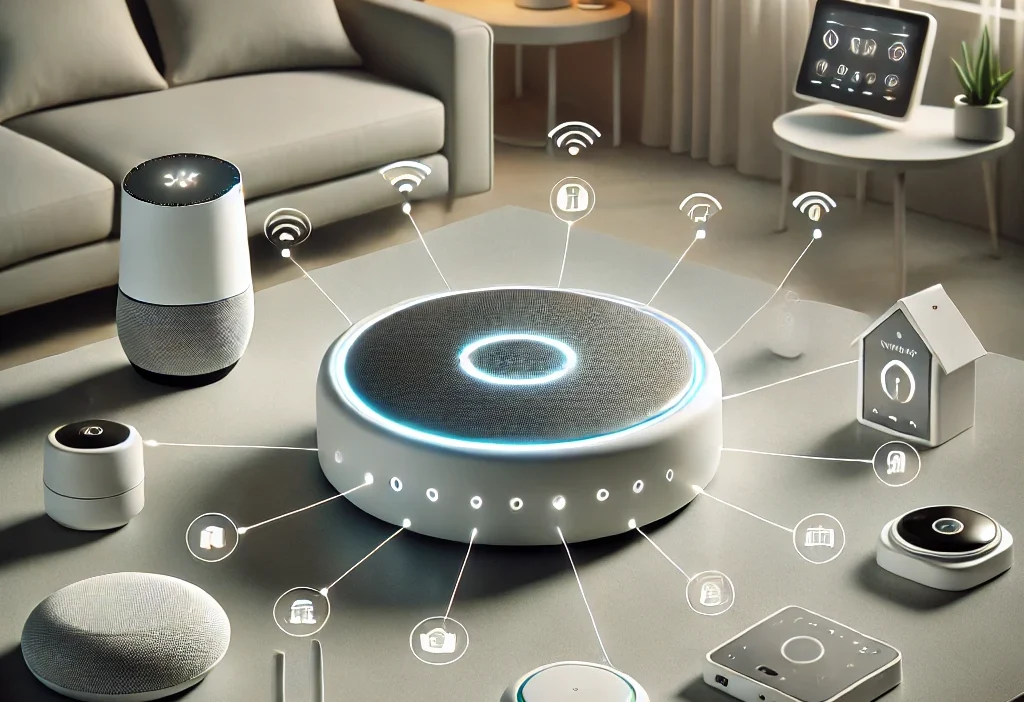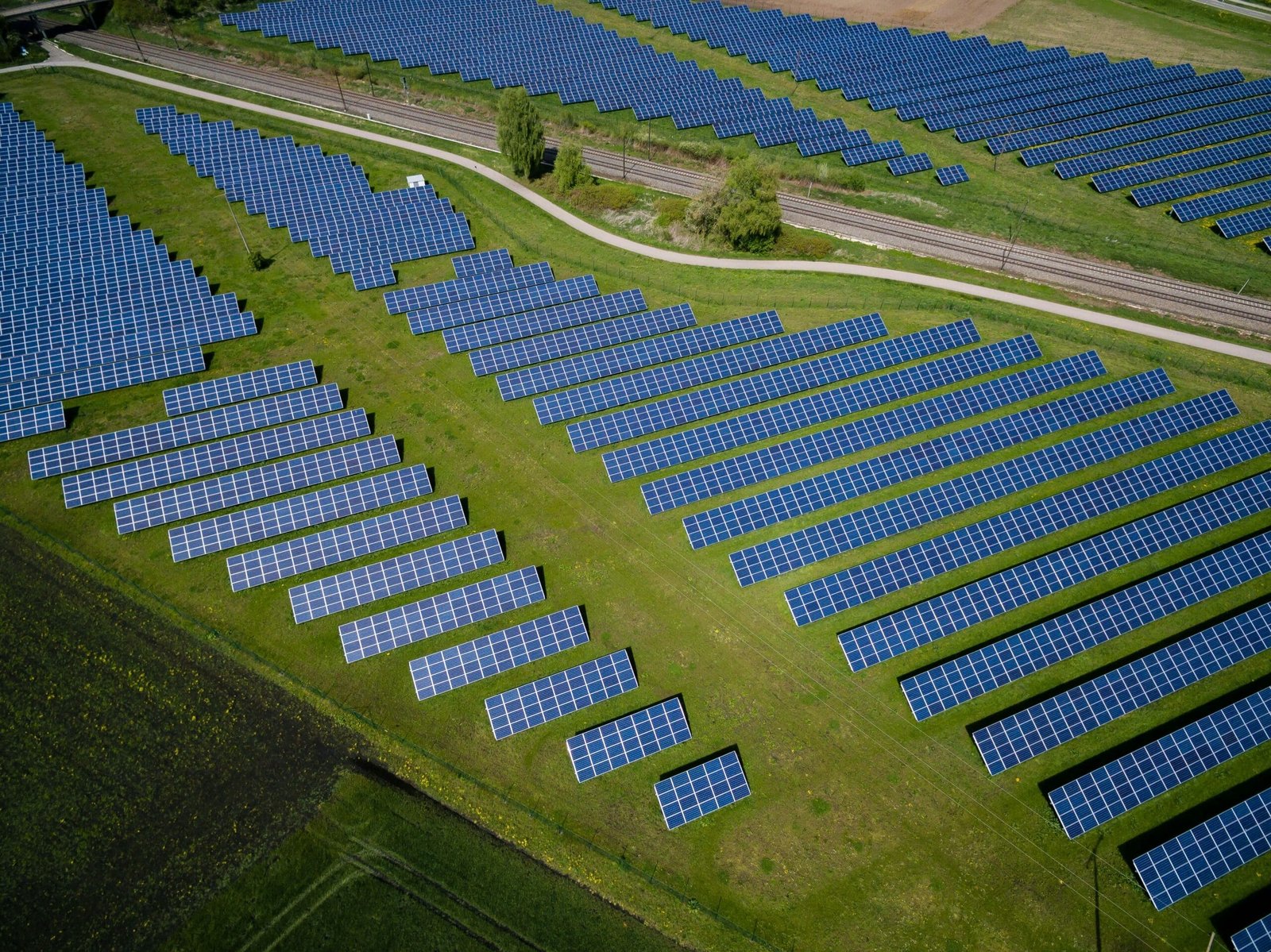Understanding Smart Home Hubs
Smart home hubs serve as the central command center for a variety of smart home devices, enabling seamless interaction between various gadgets, appliances, and systems. By functioning as the primary point of control, these hubs facilitate the communication among devices that may operate on disparate protocols. The importance of a smart home hub in a modern home cannot be understated, as it enhances user experience, streamlines operations, and fosters a cohesive smart ecosystem.
Many smart home hubs utilize commonly adopted protocols such as Zigbee, Z-Wave, and Wi-Fi to enable inter-device communication. Zigbee is particularly noted for its low power consumption and reliability in connecting numerous devices over a short range, making it ideal for home automation. Z-Wave operates similarly but is concentrated on scaling network sizes, allowing for fewer devices on the network while still maintaining strength. Wi-Fi is the most widely recognized protocol, commonly used for internet-enabled devices, offering faster speeds and broader ranges but often at the expense of increased power consumption.
The primary function of a smart home hub is to unify the management of disparate devices, which may include lights, thermostats, security cameras, and more. Instead of managing each smart device individually through separate applications, users can leverage the hub’s app to control and automate their entire smart home experience. This centralization not only enhances convenience for the user but also facilitates advanced automation scenarios, allowing for routines and schedules that incorporate multiple devices working in conjunction.
In summary, smart home hubs are critical assets in creating an efficient and user-friendly smart home environment. By providing a centralized method for controlling various smart devices, they improve interoperability and significantly enhance the overall smart home experience.
Types of Smart Home Controllers
Smart home controllers play a crucial role in managing connected devices within a smart home ecosystem. These controllers can primarily be categorized into three main types: centralized hubs, mobile applications, and voice assistants. Each type offers unique features and functionalities tailored to diverse user needs and preferences.
Centralized hubs serve as the focal point for integrating various smart devices, such as lights, locks, and thermostats. They allow users to control these devices from a single interface, enhancing convenience and coordination. Many centralized hubs support multiple communication protocols, such as Zigbee and Z-Wave, enabling a wide range of device compatibility. Popular examples of centralized hubs include Samsung SmartThings and Wink Hub, both of which provide a user-friendly interface for managing an assortment of smart home gadgets.
Mobile applications represent another efficient means of controlling smart devices. These applications, often provided by device manufacturers, allow users to manage their devices remotely via smartphones or tablets. Applications such as Philips Hue and Nest offer compatibility with specific devices, allowing for granular control over settings, schedules, and automation rules. The convenience of accessing devices from anywhere offers an advantageous solution for working individuals or those frequently on the go.
Voice assistants, such as Amazon Alexa, Google Assistant, and Apple’s Siri, have revolutionized how users interact with their smart home systems. By employing voice commands, users can control devices without physical interaction. This hands-free approach is particularly appealing for individuals with mobility challenges or those seeking a more intuitive user experience. Voice assistants can also integrate with numerous third-party devices, creating a seamless and cohesive smart home environment.
Each type of smart home controller has its distinct advantages, and the best choice depends on individual requirements and preferences. Understanding these distinctions can improve the management of multiple smart devices, facilitating a more cohesive and efficient home automation experience.
Setting Up Your Smart Home Hub
Establishing a smart home hub is a significant step towards creating a fully automated environment in your home. The first essential step is to choose the right hub. There are various types of smart home hubs available, each with different capabilities and compatible devices. It is crucial to consider compatibility with your existing devices, as the hub needs to communicate seamlessly with various smart products, such as lights, thermostats, and security systems. Popular options include Samsung SmartThings, Amazon Echo Plus, and Google Nest Hub, each catering to different needs and preferences.
Once you have selected the suitable hub, the next step involves connecting the hub to your home network. Most hubs connect via Wi-Fi or Ethernet, so ensure that your hub is within range of your router for optimal performance. Follow the manufacturer’s instructions to successfully install the hub. Typically, this requires downloading the hub’s companion app to guide you through the setup process. Pay attention to any software updates that might be necessary during installation, as these updates can enhance functionality and security.
After establishing your hub, the integration of various smart devices comes next. Utilize the app to add devices, often through a pairing process that may require you to press a button on the device or enter a code. Ensure your smart devices are compatible with your selected hub, as some may only work with specific ecosystems. Additionally, create automation routines to maximize efficiency, such as setting your lights to automatically turn on at sunset or adjusting thermostats based on occupancy.
During the setup process, users might encounter common issues such as connectivity problems or device recognition failures. Restarting the hub or the devices can often resolve these issues. If problems persist, checking the manufacturer’s support page or community forums can provide solutions tailored to specific problems. A well-configured hub results in a smoother operation of your smart home, allowing for a more integrated living experience.
Future Trends in Smart Home Hubs and Controllers
The landscape of smart home hubs and controllers is evolving rapidly, with several emerging trends shaping the future of home automation. One prominent trend is the increased integration of artificial intelligence (AI) into smart home technology. AI is enhancing the functionality of smart hubs, allowing for more intuitive control and personalized automation experiences. By analyzing user habits and preferences, these intelligent systems can adapt and optimize device management, significantly improving convenience and efficiency for homeowners.
Moreover, as smart home technology becomes more prevalent, security features are being prioritized. Consumers are increasingly concerned about protecting their privacy and data, prompting manufacturers to develop advanced security protocols for smart home hubs. This includes end-to-end encryption, secure device pairing, and regular firmware updates. Future hubs will likely incorporate more robust security measures, addressing the vulnerabilities that can arise from interconnected devices. Enhanced security will not only provide peace of mind for users but also foster greater adoption of smart home solutions.
Interoperability among devices is another trend gaining momentum in the smart home sector. Traditionally, many devices operated within their ecosystems, limiting consumer choice and usability. However, the shift towards universal standards and protocols, such as Matter, is paving the way for increased compatibility between devices from different manufacturers. This evolution will enable users to seamlessly integrate products into a single cohesive system, promoting a more efficient and customizable smart home experience.
As we look to the future, it is evident that advancements in AI, security, and interoperability will significantly influence the evolution of smart home hubs and controllers. By staying informed about these developments, homeowners can make educated decisions about future upgrades and enhancements, ensuring their smart homes remain efficient and secure in the years to come.



